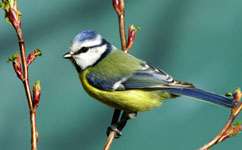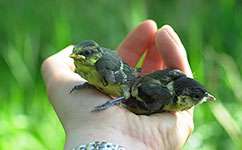City birds tougher than their country counterparts

Urban breeding birds appeared to cope better with the UK's cold, wet spring of 2012 than those living in woodland.
A new study, published in PLOS One, compared blue tits and great tits breeding in a woodland area with those nesting in Cambridge.
It's part of a long-term project which, over the last ten years, has documented the poor performance of the urban birds.
But in the harsh spring of 2012, the city birds coped relatively well, outperforming their country counterparts for the first time.
The woodland birds are more specialised on caterpillar prey. When the cold weather hit, caterpillars grew more slowly, leaving them with less to eat.
Dr Nancy Harrison, of Angila Ruskin University, led the study.
'If you look at the landscape, far more birds are in urban areas than in the woodland environments where they evolved,' she says.
'But urban birds have to do a great breadth of things to survive, whereas woodland birds tend to be quite specialised.'
"So when you get an extreme event, like the spring of 2012, that variety gives the urban birds a greater number of options to fall back on."
Harrison says the study may give clues as to how animal populations will respond to extreme weather in the future.

"These birds are short-lived animals, they live for just a few years and they reproduce quickly, so they can afford to take a one-off hit like this," she says.
"What's interesting is that this could apply to other species, and if climate change is going to bring greater extremes, it may be that the more generalist urban animals are able to cope better."
The research was carried out in collaboration with NERC's Centre for Ecology and Hydrology.
The next step is to build a more detailed picture of what the birds are eating in each habitat.
By measuring the balance of particular chemicals in feather clippings, the team are able to tell how far up the food chain the birds are feeding.
Preliminary results suggest that breeding birds in urban gardens are feeding higher up the food chain than those in woodlands, supplementing their diets with spiders and other invertebrates. This may help to explain why they are less vulnerable to weather extremes.
More information: Whitehouse MJ, Harrison NM, Mackenzie J, Hinsley SA, 'Preferred Habitat of Breeding Birds May Be Compromised by Climate Change: Unexpected Effects of an Exceptionally Cold, Wet Spring,' 2013, PLOS ONE, DOI: 10.1371/journal.pone.0075536
Journal information: PLoS ONE
Provided by PlanetEarth Online

















